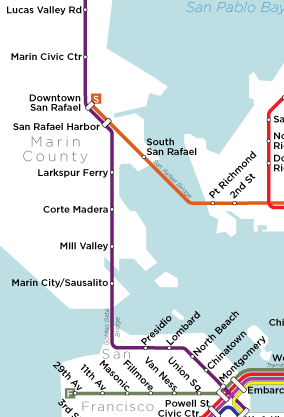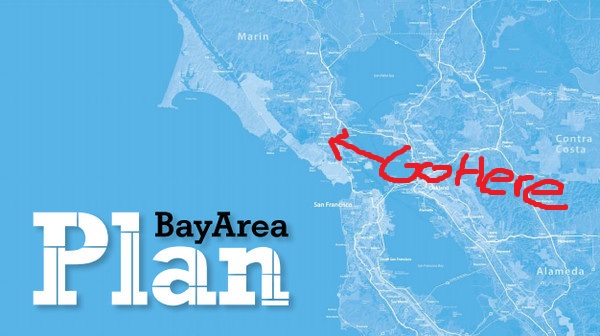 To ABAG Staff:
To ABAG Staff:
Congratulations! You've been invited to testify at a couple of Corte Madera town council meetings. I know it's far away and I know it's a tiny town, but please resist the urge to blow off these meetings. Corte Madera deserves to know why it is projected to grow and how it's expected to grow when it feels as though it's already built out. Luckily, the town council isn't terribly familiar with the Plan Bay Area process. For example, Corte Madera's representative to ABAG, Councilwoman Carla Condon, only recently learned that Plan Bay Area involves more agencies than just ABAG! There is a great opportunity to educate the council on what you do, why you do it, why it's important for Corte Madera, and why it's important for the region.
To prepare you for the task, I've assembled a bit of a cheat sheet of the questions you'll get and what you should do in preparation to answer. Each of these could be its own article, but hopefully I can point you in the right direction to find this out on your own.
Why is Plan Bay Area necessary?
Don't simply say that the state mandated it, and don't simply parrot a line about Smart Growth. Give the background on the subject. For reference, make sure to read the articles Planetizen has gathered under its SB 375 tag, including the ones critical of the legislation. That's your homework, because you need to argue for SB 375 just as hard as you argue for ABAG.
In short, Plan Bay Area is necessary to do exactly what makes the most sense: concentrate growth where there already is infrastructure to support residents; to build up our central cities; to reduce particulate pollution; to promote active living for a range of public health reasons; and to ensure growth builds up our region rather than weakens it.
Doesn't higher density growth lead to more greenhouse gases?
This is an argument popularized in Marin by Mill Valley resident Bob Silvestri, a kind of home-grown Wendell Cox. His opus on the subject argues that low-density housing is more environmentally friendly than medium-density housing. Mayor Bob Ravasio believes this, too.
Though there are a number of problems with his argument, the least obvious is that Silvestri argues as though no growth is a viable alternative. Of course constructing buildings produces greenhouse gases, but the point is to reduce per-capita greenhouse gas production, not absolute production. This means moving people to their feet where possible and transit where not, and that means that growth should happen with moderately higher densities.
Be prepared to answer criticisms like Silvestri's.
Doesn't ABAG want Corte Madera to become a high-rise city?
Assocated questions are: isn't Corte Madera already built out? Where would we put more people? ABAG's vice president stuck a foot in her mouth when she answered this question with a finger pointed in the air, saying, If you say your town is built out, then build up. For towns in Marin, her statement played right into the image of ABAG as a soul-sucking, social-experimenting, power-mad agency that wants to destroy town character. Never, ever, say that Marin needs to build up.
Not only does it sound bad to Marinites, but it's also not accurate. Instead of such a ham-fisted answer, you need to emphasize that Plan Bay Area wants to move the region back to how we used to build cities. To illustrate, talk about the parts of Marin that Marinites like. We love the places like downtown Mill Valley, downtown Corte Madera, downtown San Anselmo, downtown Larkspur, etc. When we think about small-town feel, we think of these commercial strips. Contrast this with those areas we don't like as much: Smith Ranch, Terra Linda, Vintage Oaks. The distinguishing factor between the two types of areas are what they were oriented around. The places Marinites like are old transit-oriented development, built around train stations and people walking. The places Marinites don't like are car-oriented development, built around parking lots.
What Plan Bay Area envisions is a return to traditional town planning in those places that were built with the parking lot in mind. In Corte Madera, allowing residential uses on the parking lots of the Town Center shopping mall, even if they're just townhomes, would be more than enough growth for many RHNA cycles and certainly more than expected over the next 28 years of Plan Bay Area.
People don't walk or bike now, so why would new residents?
To address this question, bring solid research and charts. Remember that the densities you're talking about for Corte Madera are in the range of 4,000 people per square mile, and that it's proximity to transit amenities and bicycle infrastructure more than population densities that will induce people to use their feet and the bus.
Take, for example, the new study from the Arizona Department of Transportation. Even at very low housing densities, moving people closer together brings down the number of vehicle miles traveled. The goal isn't to eliminate driving but to give people the option to walk, bike, or use transit without it being an undue burden. Also, it's also not solely focused on commutes. Someone who drives to work but walks to Corte Madera Cafe on Saturday - Plan Bay Area promotes more of that.
Oh, and nearly one in five commutes in Corte Madera are already by transit, bike, or foot, so someone's doing some walking.
What good has ABAG ever done for Corte Madera?
Talk to the Council about what ABAG does on a regular basis for Marin County as a whole and what they expect to do for Corte Madera in the future. ABAG, for example, manages federal grant money as a metropolitan planning organization. It also provides financial services for members; provides research data on population and housing in the region; and a host of other things (PDF). If appropriate, talk about the role of Corte Madera's representative to ABAG and how you would love to work with her more.
What is the methodology used to create your growth numbers?
Bring a modelling expert with you who can answer questions about growth methodology. This is important, so I'll say it again: bring a modelling expert with you to answer questions. For Corte Madera, the whole dispute boils down to what is happening inside the modelling black box. The council is worried that your agency will destroy Corte Madera's character out of negligence, so bring someone who can answer their questions and open up that black box.
Corte Madera has some legitimate questions that need legitimate answers. You cannot sleepwalk through this presentation or the Q&A afterwards. You will likely face a hostile public that will call you a fascist for doing regional planning. You cannot zone that out either. You need to be engaged and engaging. You need to educate the Council about what One Bay Area is doing, why they're doing it, how they're doing it, and what it all means for Corte Madera and Marin.
In all honesty, I'd love to have the answers to some of these questions. What is the proper role of a representative to ABAG? What is the exact work that went into Corte Madera's projected growth? I'll look forward to your testimony almost as much as the Council, I'm sure.
In any event, this is your chance to change the conversation in Corte Madera and the rest of the Bay Area. This is your chance to reboot your messaging. This is your chance to justify your agency's existence. Don't let that chance slip away.
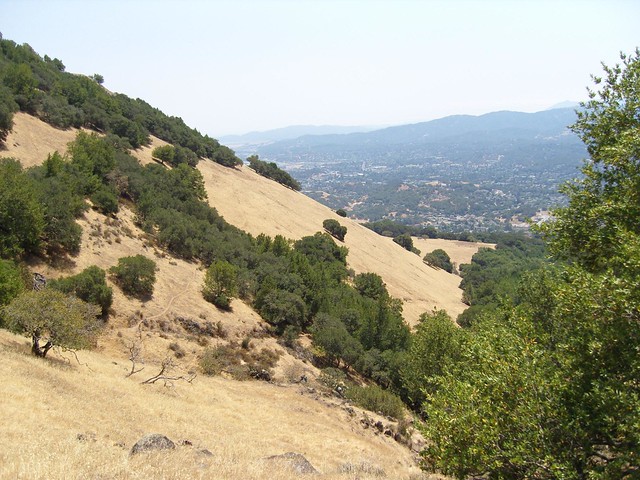 Things are starting to move in Novato, six weeks after the tragic crash that killed Hailey Ratliff. A memorial walk two weeks ago saw hundreds turn out, with city officials and residents expressing support for safer streets. Elisabeth Thomas-Matej joined my call for protected bike lanes in the city while a neighborhood group is investigating ways to lobby for safer streets. And, now that the driver who killed Hailey was cleared of wrongdoing, the Ratliff family has decided to sue Novato for negligence. The suit argues that poor road design, high speeds, and untrimmed vegetation all contributed to the tragedy.
Things are starting to move in Novato, six weeks after the tragic crash that killed Hailey Ratliff. A memorial walk two weeks ago saw hundreds turn out, with city officials and residents expressing support for safer streets. Elisabeth Thomas-Matej joined my call for protected bike lanes in the city while a neighborhood group is investigating ways to lobby for safer streets. And, now that the driver who killed Hailey was cleared of wrongdoing, the Ratliff family has decided to sue Novato for negligence. The suit argues that poor road design, high speeds, and untrimmed vegetation all contributed to the tragedy.
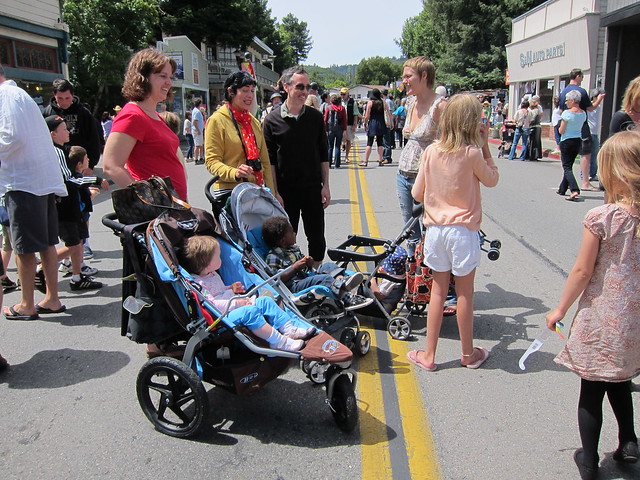
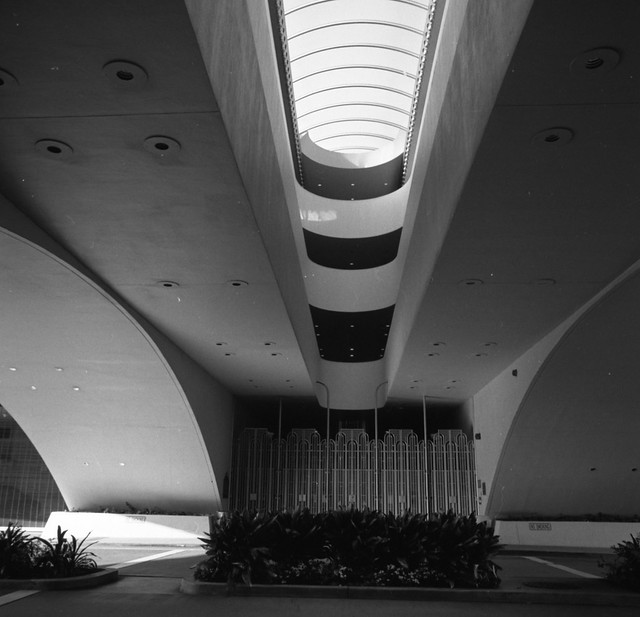




 There’s an old saying: “Think local, act global.” It’s a pithy reminder that everything we do, from our brand of toilet paper to how we structure our cities, effects everyone else.
I think someone forgot to tell Corte Madera that.
There’s an old saying: “Think local, act global.” It’s a pithy reminder that everything we do, from our brand of toilet paper to how we structure our cities, effects everyone else.
I think someone forgot to tell Corte Madera that. Over the last year, rage against the Bay Area's alphabet soup of regional authorities has simmered just below the surface of Marin politics. Although the Bay Area Air Quality Management District (BAAQMD) got its share of hate for banning fires over Christmas and the Metropolitan Transportation Commission (MTC) caught flack for housing mandates around SMART, it was the Association of Bay Area Governments (ABAG) and its Regional Housing Needs Allocation (RHNA) process that drew the most fire by forcing localities to zone for more housing. Marinites think their cities are already built out and so were incensed that an unelected agency could tell them to zone for more development. The frustration has finally boiled over in Corte Madera, and there's a push for the town to leave ABAG. It would be a mistake if it did.
Over the last year, rage against the Bay Area's alphabet soup of regional authorities has simmered just below the surface of Marin politics. Although the Bay Area Air Quality Management District (BAAQMD) got its share of hate for banning fires over Christmas and the Metropolitan Transportation Commission (MTC) caught flack for housing mandates around SMART, it was the Association of Bay Area Governments (ABAG) and its Regional Housing Needs Allocation (RHNA) process that drew the most fire by forcing localities to zone for more housing. Marinites think their cities are already built out and so were incensed that an unelected agency could tell them to zone for more development. The frustration has finally boiled over in Corte Madera, and there's a push for the town to leave ABAG. It would be a mistake if it did.

